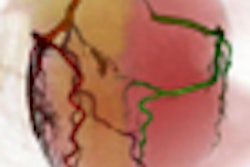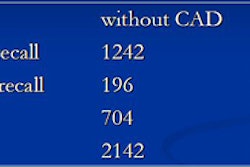
NEW YORK (Reuters Health), Jul 8 - Male breast cancer is often diagnosed at an advanced stage and axillary lymph node involvement is frequently seen at presentation, according to research presented Sunday in Lugano, Switzerland, at a conference organized by the European Society for Medical Oncology (ESMO).
In one of the largest case series ever published, Dr. Marina Garassino of University of Study of Milan, Italy, and colleagues reviewed the medical records of 146 men, median age 61.9 years, who were diagnosed with invasive breast cancer between 1990 and 2007 at the 12 centers in the ORION Collaborative Group.
In a telephone interview with Reuters Health, Garassino noted that "one-third of the men presented with advanced breast cancer. This is not the same as in females, in which the presentation is advanced in less than 10%."
Physicians and patients may both play a part in delayed diagnosis of male breast cancer, Garassino surmises. "Physicians may not recognize the tumor in men; they see a lump but don't think that it may be breast cancer. Also, men might not suspect that they have a tumor and they arrive to the physician later than females."
In the current series, pathology reports revealed axillary lymph node involvement in 71 cases (50%), T1 or T2 tumors in 52% cases, and T3 or T4 tumors in 48%. Infiltrating ductal carcinomas comprised 82.4% of male breast cancer in this series.
Immunohistochemical analysis of tumors showed that 73% were positive for estrogen receptors and/or progesterone receptors. HER-2/neu status was determined in 41 men; it was overexpressed in 20 (48.7%). Typically, about one-third of female breast cancers overexpress HER-2/neu.
"Male breast cancer is a very hormonal-dependent disease," Garassino said, and there is some evidence that, if treated early, "prognosis may be better" than in women.
All of the men underwent surgery. Conservative procedures were performed in 13 men (9%) and mastectomy in 133 (91%). After surgery, 48 men received radiotherapy and 100 received adjuvant chemotherapy or hormonal therapy. Of note, the investigators say, is the finding that 42 men (30%) received no further treatment after surgery.
After a median follow-up of 5.2 years, the estimated 10-year disease-free survival and overall survival rates were 80% and 47%, respectively, for men with T1 or T2 disease, and 48% and 44%, respectively, for men with T3 and T4 disease.
Summing up, Garassino said: "Male breast cancer is a rare disease, occurring in less than 1% of cases, and it is always considered the same disease as female breast cancer, but our study suggests that the biological characteristics are very different."
By Megan Rauscher
Last Updated: 2008-07-07 12:24:19 -0400 (Reuters Health)
Related Reading
Men less likely to survive early breast cancer, May 10, 2007
Copyright © 2008 Reuters Limited. All rights reserved. Republication or redistribution of Reuters content, including by framing or similar means, is expressly prohibited without the prior written consent of Reuters. Reuters shall not be liable for any errors or delays in the content, or for any actions taken in reliance thereon. Reuters and the Reuters sphere logo are registered trademarks and trademarks of the Reuters group of companies around the world.


















